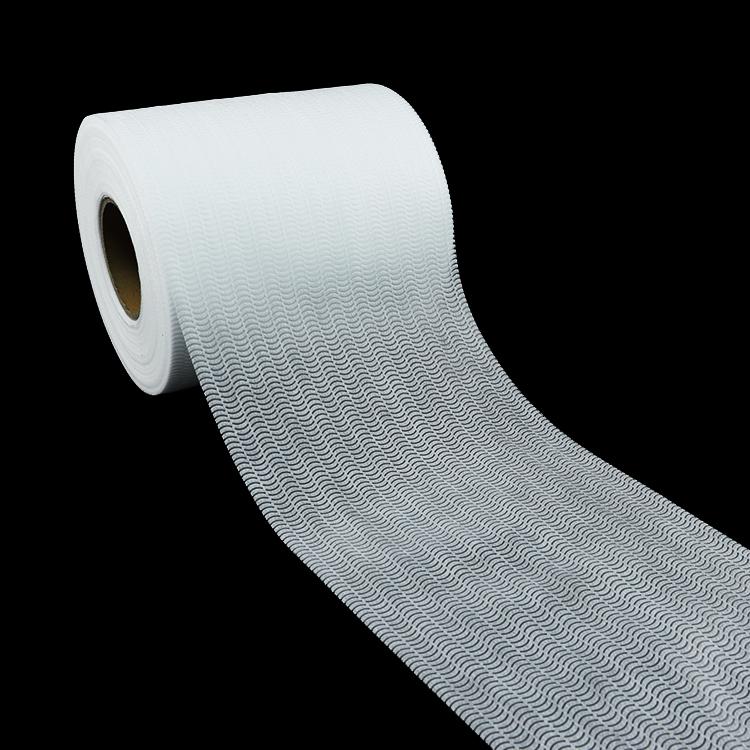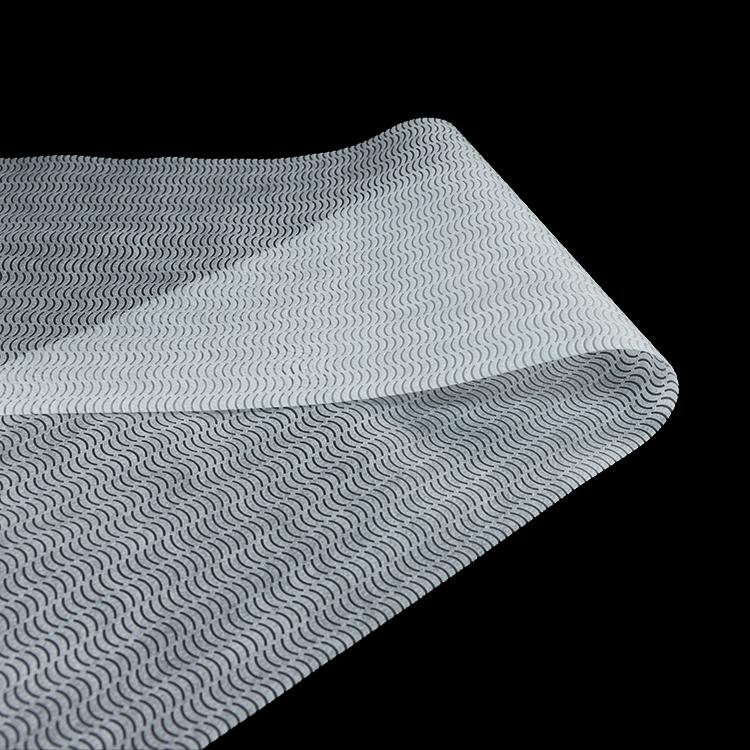Author:Baby & Adult Diaper Materials FROM:Diaper Materials Manufacturer TIME:2023-03-07
The diapers are made of a high molecular absorbent resin material and there is a difference between the thickness of the nappies, the thinner ones are more breathable and the thicker ones are relatively more absorbent. So, what is the difference between diaper material composition and thickness?

Baby diapers,so that your baby is safe and comfortable, are available in a dazzling variety of nappies on the market. Different diapers, their function and material are different. The scientific name for the water-absorbing, water locking factor is polymeric absorbent resin. It is a new type of polymer material which is able to absorb hundreds to thousands of times its own weight of water, non toxic, harmless and nonpolluting; it has a particularly high water absorption capacity and a particularly high water retention capacity. The high molecular weight polymer obtained through the polymerisation of acrylic acid high water retention, balance of absorption under high load, the water absorbed cannot be extruded by simple physical methods and can be repeatedly released and absorbed.
The properties and applications of the high molecular weight absorbent resin determine the quality of the diaper material composition.
A. High water absorption: the ability to absorb hundreds or thousands of times its own weight of non-ionic water.
B. High absorption rate: each gram of highly absorbent resin can absorb hundreds of grams of non-ionic water within 30 seconds.
C. High water retention: the absorbed gel does not easily squeeze water out of it even under applied pressure.
D. High swelling: the volume of the highly absorbent resin gel expands hundreds of times immediately after absorption.
E. Ammonia absorption:The low cross-linked polyacrylate type highly absorbent resin contains a carboxyl anion in its molecular structure, which can be absorbed when it meets ammonia and has a significant deodorising effect. Generally after the baby is one year old, then wear pull-ups. After your baby can walk, he or she will need to be trained to pee and poo, so it is more appropriate to wear pull-up trousers at this time, which is equivalent to giving your baby a thick underwear so that he or she can train to walk and avoid wetting his or her trousers.
F. In fact, the main difference is the material, some people may think that it is the size of the water absorption, but in fact it is not. In fact, many of the thinner nappies on the market contain a lot of absorbent resin, which makes them more absorbent. Thicker diapers have more fluffy pulp in them, which not only does not improve the diaper material composition, but increases the thickness of the nappy. The absorbency, softness and comfort will then be correspondingly worse. After the child has urinated, the urine cannot be absorbed quickly by the permeable layer and the little bottom will be soaked in the urine and wet and uncomfortable. The thicker the diaper, the more uncomfortable it will be for the baby to wear it. The thicker the diaper, the more uncomfortable it will be for your baby. Therefore, it is better to wear a thinner diaper for comfort. The breathability of diapers is mainly influenced by the material, overall structure and technology. Therefore, the key to breathability is to change nappies in time. Also, those who say that nappies are breathable are talking as if they don't know what it's like to wet your trousers. Diapers are ultimately a consumable product, so there is no need to go for a high-end range, just pick one that your child feels comfortable in.

A. Water absorption and locking principle: Nowadays, good diaper material composition mainly consists of wood pulp and polymer materials. After the polymer material has absorbed water and become a hydrogel, it will be hard and start to ball up, so adding wood pulp can keep the diaper as flat and soft as possible. The polymer has the ability to absorb hundreds to thousands of times more water than itself. In order to stop the liquid from seeping back in, it can only suck in and not spit out. Even with pressure it is difficult to separate the water out.
B. So when the diaper absorbs the urine, it expands and becomes heavier, and when you take it out into the sun, you will find it difficult to dry! Even after drying, the diaper will not return to the way it was before it was used. The process of swelling after absorbing water is irreversible. After one use, it basically loses its ability to absorb water, so it is easy to dry it and use it again.
C. Surface/substrate material: The structure of a diaper can be divided into 3 layers: the surface covering layer, the middle absorbent core layer and the base fabric. The surface layer of the diaper is made of non woven fabric, while the bottom layer is mainly made of PE film. The surface layer of non-woven fabric is less strong and durable compared to ordinary textile fabrics. Its fibres are arranged in a certain direction and are prone to splitting from a right angle. If washed, it is easily deformed.
D.The bottom layer,PE film(polyethylene),is an impermeable film. Polyethylene is prone to ageing, discolouration and cracking when exposed to the sun, so drying is not recommended. Bacteria can be left on diapers worn by babies. Also, the protective surface layer of worn diapers has been damaged (even after sun exposure), making them susceptible to bacterial infection when used again. Also because of repeated use and poor absorbency, the baby's bottom is constantly exposed to damp nappies and soaked in moisture,which can easily cause nappy rash (red bottom) or even erosion.
E.Conclusion:Diapers deteriorate after washing and are not recommended for repeated use! Causes of red bottom: Babies have a very active metabolism, especially water metabolism, and with a small bladder, they have to pee many times a day. The younger they are, the more often they pee. If care is not taken promptly, the little buttocks are often in a damp state. Wet skin is then very fragile and can easily cause nappy rash (red bottom). The surface of the diaper is a special material with many small holes that are invisible to the eye in order to ensure breathability. These holes are so small that liquids cannot pass through, but gases such as steam can. The outside of the diaper feels wet to the touch precisely because the hot, humid air has dispersed to the outside.


 Email: info@whldiapernonwoven.com
Email: info@whldiapernonwoven.com
 MP/WhatsApp: +86-13599937366
MP/WhatsApp: +86-13599937366
 Manufacturer Address:Room 1105B, Bld M1, Manhattan, Yulongwan, Shimao, Shuanglong Road, Meiling Street, Jinjiang, Fujian, China
Manufacturer Address:Room 1105B, Bld M1, Manhattan, Yulongwan, Shimao, Shuanglong Road, Meiling Street, Jinjiang, Fujian, China